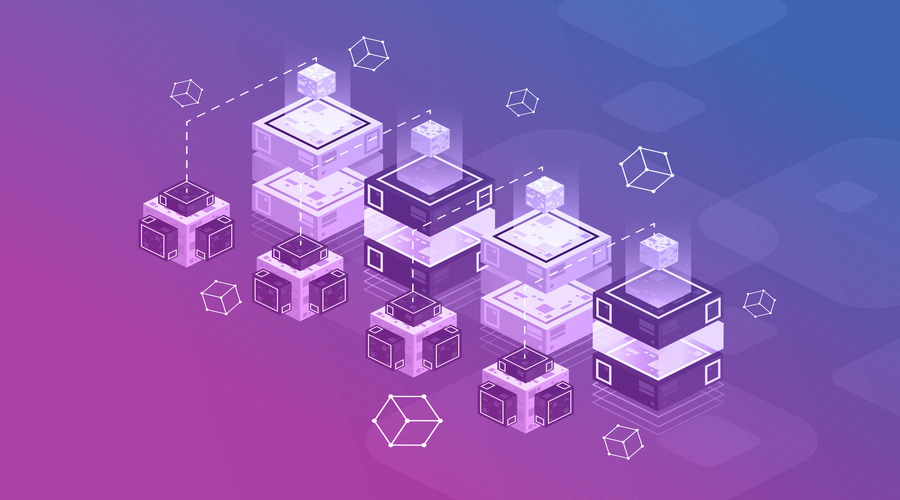Layer 2 scaling solutions have gained significant attention in the blockchain industry as a means to address the scalability limitations of Layer 1 blockchains. In this article, we will delve into the world of Layer 2 solutions, exploring their advantages, different types, and their applications in various sectors. Furthermore, we will conduct a comparative analysis of these solutions, highlighting their strengths and limitations. By the end of this article, you will have a comprehensive understanding of Layer 2 solutions and their implications for the future of blockchain technology.
Introduction
Blockchain technology has revolutionized various industries by enabling secure and transparent transactions. However, as the adoption of blockchain platforms has grown, so have the challenges associated with scalability and transaction costs. Layer 1 blockchains, such as Bitcoin and Ethereum, face limitations in terms of the number of transactions they can process per second. This has led to the emergence of Layer 2 solutions, which aim to address these limitations while maintaining the security and decentralization of the underlying Layer 1 blockchain.
What are Layer 2 Solutions?
Layer 2 solutions are protocols or frameworks built on top of existing Layer 1 blockchains that enable the processing of transactions off-chain or in a more efficient manner. These solutions aim to alleviate the strain on Layer 1 blockchains by handling a significant portion of the transaction load off-chain, while still leveraging the security of the underlying Layer 1 blockchain when necessary.
Advantages of Layer 2 Solutions
Scalability
One of the primary advantages of Layer 2 solutions is scalability. By moving transactions off-chain, Layer 2 solutions can significantly increase the throughput and capacity of the underlying Layer 1 blockchain. This enables faster and more efficient transaction processing, making blockchain technology more suitable for applications requiring high transaction volumes.
Reduced Transaction Costs
Layer 2 solutions also offer the benefit of reduced transaction costs. By aggregating multiple transactions into a single batch and settling them on the Layer 1 blockchain as a single transaction, Layer 2 solutions can significantly reduce the fees associated with individual transactions. This makes blockchain technology more accessible and cost-effective for users.
Enhanced Privacy
Privacy is another area where Layer 2 solutions excel. By conducting transactions off-chain or using techniques such as zero-knowledge proofs, Layer 2 solutions can provide enhanced privacy features. Users can enjoy the benefits of blockchain technology while maintaining their privacy and confidentiality.
Faster Transaction Speeds
Layer 2 solutions enable faster transaction speeds by processing transactions off-chain and settling them on the Layer 1 blockchain in a more efficient manner. This improvement in transaction speed opens up new possibilities for real-time applications and improves the overall user experience.
Types of Layer 2 Solutions
There are several types of Layer 2 solutions, each with its unique approach to scalability and transaction processing. Let’s explore some of the most prominent types:
State Channels
State channels are a type of Layer 2 solution that allows multiple participants to conduct numerous transactions off-chain, only settling the final state on the Layer 1 blockchain. These channels enable near-instantaneous and low-cost transactions, making them suitable for applications such as micropayments, gaming, and instant exchanges.
Sidechains
Sidechains are independent blockchains connected to the main Layer 1 blockchain. They enable the transfer of assets between the main blockchain and the sidechain, allowing for faster and more scalable transactions. Sidechains can be customized to meet specific requirements and use cases, making them versatile for different applications.
Plasma
Plasma is a Layer 2 scaling solution that operates as a tree of child chains, anchored to the main Layer 1 blockchain. It allows for increased scalability by processing transactions on the child chains and periodically committing the aggregated results to the main blockchain. Plasma is particularly useful for applications involving complex smart contracts and high transaction volumes.
Rollups
Rollups are Layer 2 solutions that bundle multiple transactions into a single batch and submit them to the Layer 1 blockchain. They can be categorized into two types: optimistic rollups and zk-rollups. Optimistic rollups validate transactions off-chain and submit them to the Layer 1 blockchain, assuming they are valid unless proven otherwise. Zk-rollups, on the other hand, use zero-knowledge proofs to validate the correctness of the transactions before submitting them to the Layer 1 blockchain. Rollups provide a balance between scalability and security.

Comparison of Layer 2 Solutions
Now that we have explored the types of Layer 2 solutions, let’s compare them based on several key factors:
Scalability
When it comes to scalability, state channels and sidechains provide the highest throughput and transaction capacity. State channels enable near-instantaneous transactions with minimal fees, while sidechains offer a high degree of customization and independence. Plasma and rollups also offer significant scalability improvements, albeit with some trade-offs in terms of transaction finality and complexity.
Security
In terms of security, Layer 1 blockchains provide the highest level of security due to their robust consensus mechanisms and large network of validators. While Layer 2 solutions leverage the security of the underlying Layer 1 blockchain, they may introduce additional risks depending on their design and implementation. However, solutions like rollups, which ensure data availability and validity proofs, provide strong security guarantees.
Decentralization
Layer 1 blockchains are known for their decentralized nature, with multiple validators participating in the consensus process. Layer 2 solutions vary in terms of decentralization, with some relying on a smaller set of trusted validators or operators. State channels and rollups typically maintain a higher degree of decentralization compared to sidechains and plasma.
Interoperability
Interoperability is crucial for the seamless transfer of assets and data between different blockchains. Sidechains and plasma solutions often excel in this aspect by allowing for the exchange of assets between the main Layer 1 blockchain and the sidechain or child chain. State channels and rollups, while not directly focused on interoperability, can still benefit from interoperable Layer 1 blockchains.
User Experience
Layer 2 solutions aim to improve the user experience by offering faster transactions and lower fees. State channels provide the most instantaneous and seamless user experience, as transactions occur off-chain and only require occasional settlement on the Layer 1 blockchain. Rollups also offer fast and cost-effective transactions, while sidechains and plasma may introduce slightly longer settlement times due to their periodic commitment to the main blockchain.
Use Cases of Layer 2 Solutions
Layer 2 solutions have a wide range of applications across various sectors. Let’s explore some of the prominent use cases:
Gaming
Layer 2 solutions have significant potential in the gaming industry, where fast and inexpensive transactions are essential. State channels, in particular, enable real-time microtransactions, in-game asset ownership, and secure item trading. Gamers can enjoy seamless experiences with reduced fees and improved security.
Decentralized Finance (DeFi)
DeFi applications have gained tremendous popularity in recent years, but high gas fees and slow transaction speeds on Layer 1 blockchains have hindered their scalability. Layer 2 solutions provide a solution by offering faster and cheaper transactions, allowing for the efficient execution of smart contracts, lending/borrowing, decentralized exchanges, and other DeFi functionalities.
Non-fungible Tokens (NFTs)
The NFT market has experienced explosive growth, but the scalability limitations of Layer 1 blockchains have posed challenges. Layer 2 solutions enable the minting, trading, and transferring of NFTs with reduced costs and faster settlement times. This opens up new opportunities for artists, collectors, and platforms to explore the potential of digital assets.
Challenges and Limitations of Layer 2 Solutions
While Layer 2 solutions offer significant advantages, they are not without their challenges and limitations. Some of the key concerns include:
- Security risks: Layer 2 solutions may introduce new attack vectors and potential vulnerabilities, requiring thorough security audits and robust design.
- Complexity: Implementing and maintaining Layer 2 solutions can be complex, requiring developers to adapt their applications and ensure compatibility.
- Centralization risks: Certain Layer 2 solutions may rely on a smaller set of validators or operators, leading to concerns about centralization and potential control over the network.
- User adoption: Educating users about Layer 2 solutions and encouraging their adoption can be a challenge, as it requires a shift in user behavior and awareness of the benefits.
- Interoperability: While Layer 2 solutions improve scalability within a specific blockchain ecosystem, achieving seamless interoperability between different Layer 1 blockchains and Layer 2 solutions remains a challenge.
Future Prospects and Developments
Layer 2 solutions continue to evolve rapidly, with ongoing research and development efforts to address the existing limitations and further enhance scalability, security, and usability. We can expect more innovative solutions, optimized designs, and improved interoperability in the coming years. As Layer 2 solutions mature, they have the potential to revolutionize various industries, enabling widespread adoption of blockchain technology.
Conclusion
Layer 2 solutions provide a promising avenue for addressing the scalability limitations of Layer 1 blockchains while maintaining security and decentralization. Through techniques such as state channels, sidechains, plasma, and rollups, these solutions offer scalability, reduced transaction costs, enhanced privacy, and faster transaction speeds. They find applications in gaming, DeFi, NFTs, and more. However, challenges related to security, complexity, centralization, user adoption, and interoperability remain. As the blockchain industry continues to advance, Layer 2 solutions will play a crucial role in shaping the future of blockchain technology.
FAQs
- What is the main purpose of Layer 2 solutions? Layer 2 solutions aim to address the scalability limitations of Layer 1 blockchains by processing transactions off-chain or in a more efficient manner, enabling faster transaction speeds and reduced costs.
- Are Layer 2 solutions compatible with all blockchains? Layer 2 solutions are typically built on top of specific Layer 1 blockchains, and their compatibility depends on the underlying blockchain’s architecture and design. However, interoperable Layer 2 solutions can potentially work across multiple blockchains.
- How do Layer 2 solutions enhance privacy? Layer 2 solutions enhance privacy by conducting transactions off-chain or utilizing techniques such as zero-knowledge proofs, ensuring that sensitive transaction details are not exposed publicly on the Layer 1 blockchain.
- Can Layer 2 solutions completely eliminate scalability issues? While Layer 2 solutions significantly improve scalability, they may not completely eliminate scalability issues. They provide scalable transaction processing but rely on the Layer 1 blockchain for security and settlement, which can still introduce some limitations.
- Are Layer 2 solutions more secure than Layer 1? Layer 1 blockchains generally provide the highest level of security due to their robust consensus mechanisms and large network of validators. Layer 2 solutions leverage the security of the underlying Layer 1 blockchain but may introduce additional risks depending on their design and implementation.
